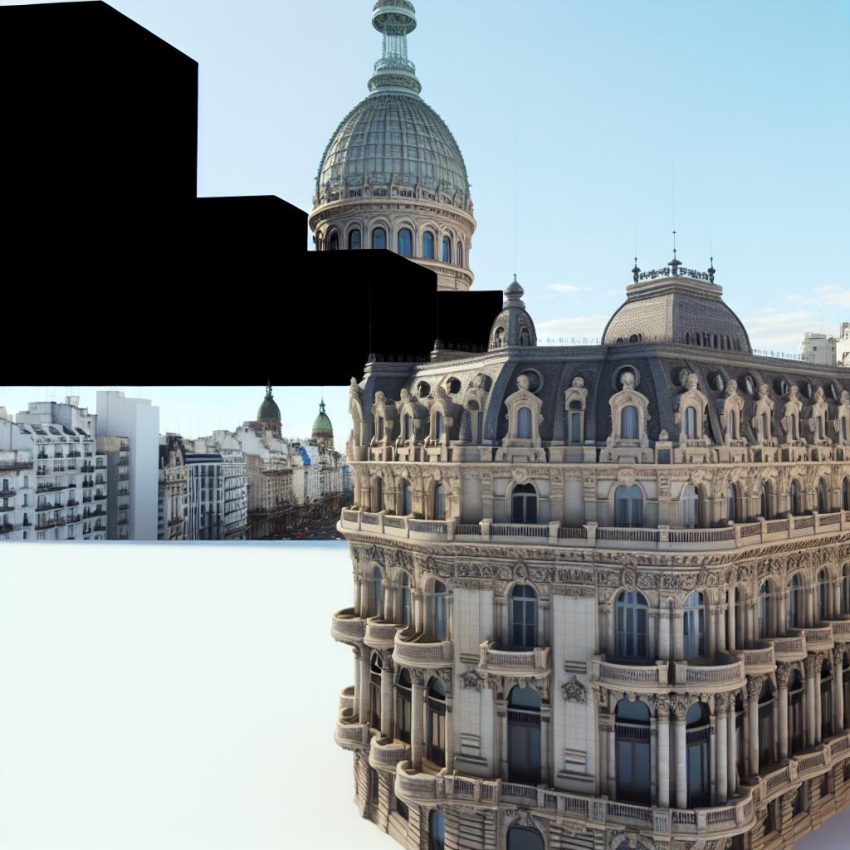Introduction to Palacio Barolo
Located in the vibrant city of Buenos Aires, Argentina, Palacio Barolo stands out as an architectural masterpiece that has captured the attention of locals and tourists alike. Completed in 1923, this remarkable building was the brainchild of Mario Palanti, an innovative architect commissioned by Luigi Barolo, a successful Italian businessman. What distinguishes Palacio Barolo from other buildings in the region is its unique blend of architectural styles and profound symbolism inspired by Dante Alighieri’s canonical literary work, The Divine Comedy.
Architectural Design and Symbolism
Palacio Barolo is a stellar example of architectural ingenuity, combining elements of Italian and Hindu architectural styles infused with the early modernist aesthetics reminiscent of the skyscrapers emerging in Europe during that era. At a time when skyscrapers were a novel concept in Argentina, Palacio Barolo stood proudly as the tallest building in the country, reaching an impressive height of 100 meters. It held the record until it was surpassed in 1935. The use of reinforced concrete was avant-garde for its time, showcasing the forward-thinking design that aligns with its modernist identity.
The structural composition of Palacio Barolo is expertly divided into three distinct sections, each reflecting different realms within Dante’s poetic narrative. The basement and ground floors embody the concept of hell, characterized by their darker undertones and labyrinthine layout. As visitors ascend to the middle floors, they find themselves traversing purgatory, indicating a transitional phase both in the building’s design and symbolic meaning. Finally, the upper floors symbolize paradise, culminating in a majestic lighthouse that not only signifies Dante’s vision of paradise but also offers stunning panoramic views of Buenos Aires below. The building comprises 22 floors in total, each representing one of the cantos from Dante’s epic poem.
Interior Features
Stepping inside Palacio Barolo is akin to entering a realm where literature and architecture converge. The interior is adorned with an array of intricate sculptures and carvings, each painstakingly crafted to depict scenes from The Divine Comedy. These artistic elements provide an immersive experience, inviting visitors to explore a world where mythology and artistic prowess coalesce.
One of the most awe-inspiring features of Palacio Barolo’s interior is the central hall. Its grandeur is accentuated by a magnificent dome, complemented by artistic stained glass windows that illuminate the space with vibrant colors and celestial motifs. The lighting within the hall evokes a sense of the divine, underscoring the building’s thematic ties to paradise.
Historic and Cultural Significance
In 1997, Palacio Barolo was officially declared a National Historic Monument, solidifying its significance in both the architectural and cultural history of Argentina. This recognition celebrates the building’s role as more than just a feat of architectural prowess. It is also an embodiment of the European cultural influence that permeated South America during the early 20th century. Palacio Barolo stands as a testament to Mario Palanti’s architectural genius and Luigi Barolo’s visionary ambition. Their collaborative effort was driven by a desire to create an enduring refuge for Dante’s literary works, amidst a backdrop of political unrest in Europe.
Visiting Palacio Barolo
Today, Palacio Barolo is a destination for travelers seeking to explore the rich history and cultural depth of Buenos Aires. It draws thousands of visitors who wish to admire its architectural magnificence and explore its symbolic narrative. The building offers a range of guided tours, providing insights into its historical significance and the intricate symbolism woven throughout its design. Some tour packages even include access to the lighthouse, offering visitors a breathtaking view of the sprawling cityscape of Buenos Aires. For those interested in planning a visit, details about visiting hours and tour bookings can be found on the official site of Palacio Barolo.
In conclusion, Palacio Barolo remains an iconic cultural and architectural landmark in Buenos Aires. It not only serves as a striking example of innovative architectural design but also as a bridge connecting South America to European literary heritage through its symbolic homage to Dante’s The Divine Comedy. The building offers both residents of Buenos Aires and visiting tourists an exceptional glimpse into a rich historical narrative and the symbolic depth of this extraordinary structure.

